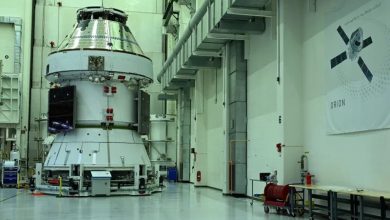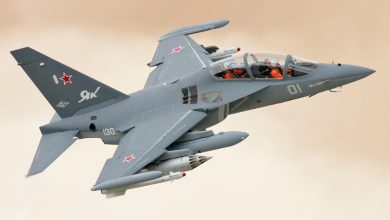
Airbus Unveils Innovative Remote Carrier Tested Aboard A400M for First Time
Germany’s Bundeswehr, Airbus, the German Aerospace Center DLR, and local enterprises SFL and Geradts have collaboratively achieved the globe’s inaugural successful launch and operation of a Remote Carrier flight test demonstrator from a soaring A400M. Augmenting the capabilities and extending the reach of unmanned systems will be one of the future functionalities of Airbus’ military transport aircraft in the Future Combat Air System (FCAS).
“The remarkable teamwork with our German client and collaborators on the A400M UAV Launcher initiative further demonstrates how the evolution of FCAS will elevate innovation and technologies to unprecedented levels,” remarked Airbus Defence and Space CEO Michael Schoellhorn. “FCAS as a system of systems is beginning to materialize now.” The apparatus for launching Remote Carriers from a flying A400M was crafted within just six months. For the test flight, it was positioned onto the ramp of a Bundeswehr A400M, from which the Remote Carrier demonstrator, a modified Airbus Do-DT25 drone, was deployed. After release, the Do-DT25’s engines were activated, allowing it to proceed in powered flight mode. The crew aboard the A400M then transferred control to an operator on the ground, who skillfully commanded and landed the drone.
Remote Carriers will serve as a critical element of FCAS. They will operate in close synergy with manned aircraft, assisting pilots in their assignments and missions. Military transport aircraft like the A400M will play a significant role: as motherships, they will transport the Remote Carriers as near as feasible to their operational zones before deploying up to 50 smaller or up to 12 heavier Remote Carriers. These will then integrate with manned aircraft, functioning with a substantial level of automation yet always under a pilot’s supervision.
Preparing the A400M UAV Launcher for Testing
To prepare the A400M UAV Launcher for the test campaign, Airbus, the Bundeswehr Technical Centre for Aircraft and Aeronautical Equipment (WTD 61), DLR, SFL, and Geradts employed innovative strategies such as rapid prototyping and a coordinated flight testing framework. This approach empowered the multidisciplinary team to develop and incorporate the system, integrating it into the necessary systems-of-systems context within a brief timeframe, ready for flight evaluation. Throughout the development process, this adaptable industrial methodology and new collaborative practices were backed by the German procurement agency, BAAINBw.






